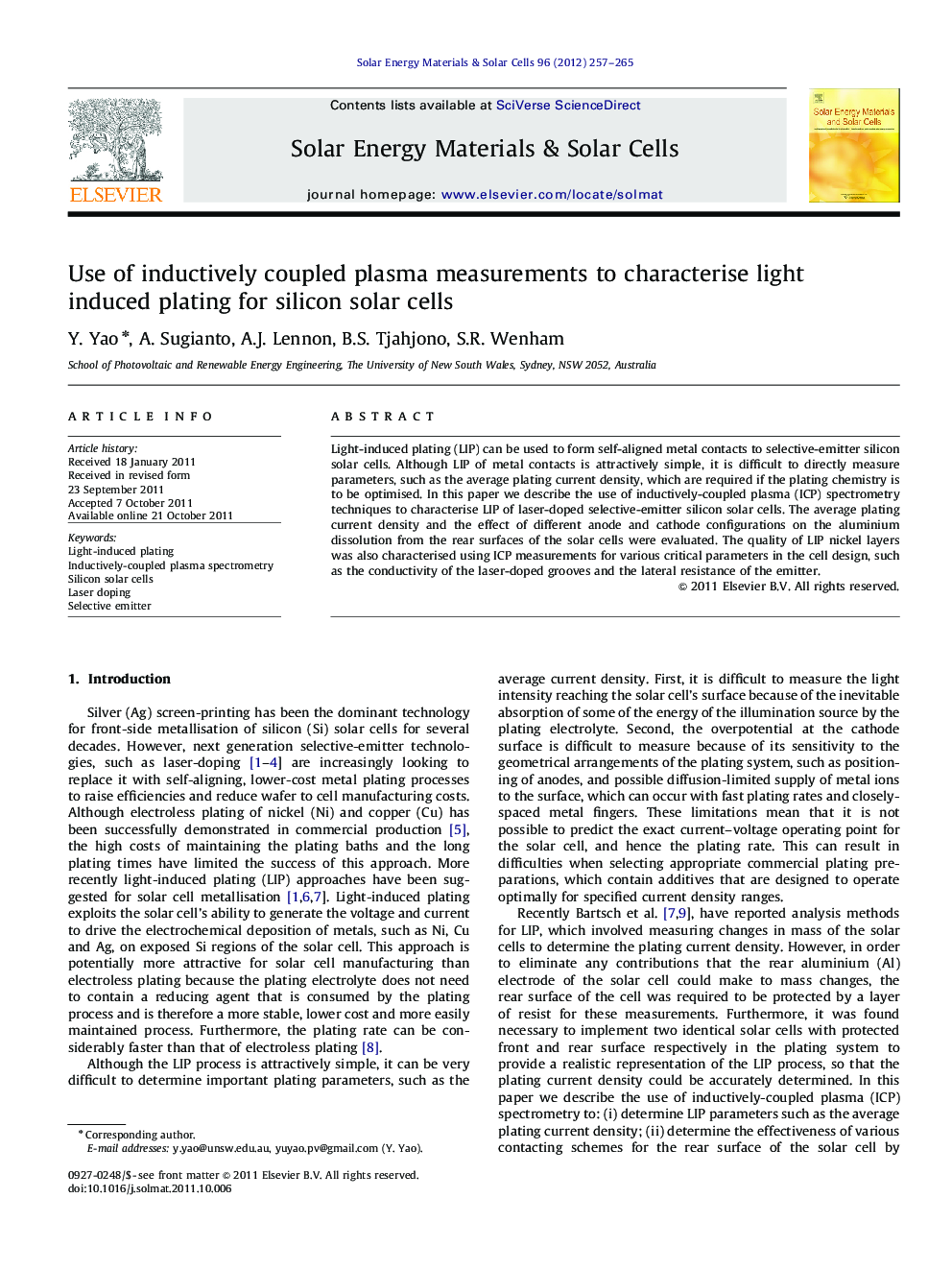| Article ID | Journal | Published Year | Pages | File Type |
|---|---|---|---|---|
| 79495 | Solar Energy Materials and Solar Cells | 2012 | 9 Pages |
Light-induced plating (LIP) can be used to form self-aligned metal contacts to selective-emitter silicon solar cells. Although LIP of metal contacts is attractively simple, it is difficult to directly measure parameters, such as the average plating current density, which are required if the plating chemistry is to be optimised. In this paper we describe the use of inductively-coupled plasma (ICP) spectrometry techniques to characterise LIP of laser-doped selective-emitter silicon solar cells. The average plating current density and the effect of different anode and cathode configurations on the aluminium dissolution from the rear surfaces of the solar cells were evaluated. The quality of LIP nickel layers was also characterised using ICP measurements for various critical parameters in the cell design, such as the conductivity of the laser-doped grooves and the lateral resistance of the emitter.
► We present an accurate measuring method to monitor light-induced plating(LIP) process. ► Average cell operating current density and cathode current density were calculated. ► It helps understand LIP process on solar cell using simple laboratory arrangements. ► It helps adjust LIP processing parameters to fabricate high efficiency solar cells.
